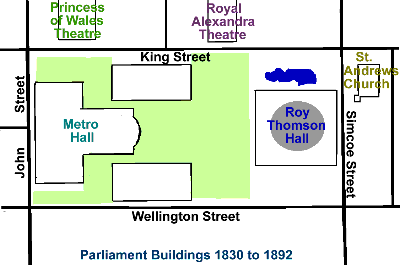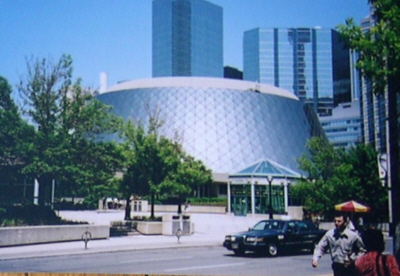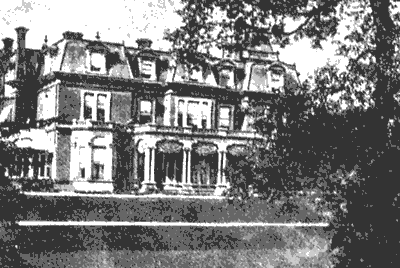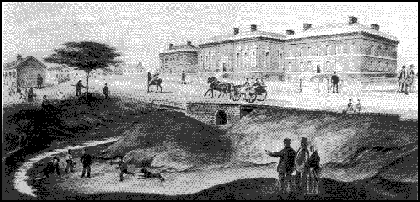
Roy Thomson Hall
Roy Thomson Hall opened in the fall of 1982 after years of planning and fund raising, The architects were Arthur Erickson and Mather and Haldenby. Violinist Itzhak Perlman acts as a special advisor to the architects to ensure accessibility at all levels for disabled performers and patrons. Funding came from the three levels of government, corporations, foundations and the public. The total price tag was $57 million. The concert hall was named “Roy Thomson Hall” as the largest single donation came from the family of the late Roy Thomson, $4.5 million.

In 2002 the hall was shutdown for 22-weeks to make major interior improvements. Russell Johnson, one of the world’s foremost acousticians, was hired to plan and supervise the acoustical reengineering of the auditorium, working with the Canadian architectural design firm Kuwabara Payne McKenna Blumberg to ensure integration of the acoustical modifications with functional and aesthetic enhancements to the Hall.

On the sidewalk outside Roy Thomson Hall and also the Royal Alex and Princess of Wales theatres may be found stars honouring Canadian artists of note.
Four Nations Corner
The King and Simcoe Streets intersection was a busy place in the latter part of the 19th century. Government House, the official residence of the Lieutenant Governor of Ontario, was located in the block now occupied by Roy Thomson Hall and Metro Hall and the Parliament Buildings were in the block to the south. Upper Canada College stood on the north west corner. A popular tavern was on the north-east corner. St. Andrews Church, opened in 1876, is still on the fourth corner. The four corners were known as “The Four Nations: Legislation, Education, Damnation and Salvation.
Government House
The block now occupied by Roy Thomson Hal; and Metro Hall was the location for the official Lieutenant-Governor’s Residence or Government House during the nineteenth century. The house was positioned roughly mid-block with scattered outbuildings. The first building here was the home of Chief Justice John Elmsley, which had been built in 1798. Elmsley House became the first official Lieutenant-Governor’s Residence provided by the government and was used as such until 1841. In 1862, it was destroyed by fire. Four years later, the firm of Gundry and Langley of Toronto was commissioned to design a new Government House.

The second Government House
This three-story red brick house, trimmed with Ohio cut stone, was build in the Second Empire style, with a tower, steeply sloped mansard roofs, and dormer windows. The main entrance with its carriage porch of cut stone faced Simcoe Street. The drawing room on the first floor and the state bedroom on the second floor faced the lake over a large landscaped garden. The main reception hall was 65’ by 21’ with ornate plasterwork and heavy woodwork. Completed in 1870, the house cost $105,000. Its first resident was John Beverley Robinson. In the meantime. the neighbourhood was gradually changing and railroad tracks were getting closer to the house. It was sold in 1912 to the Canadian Pacific Railway, which demolished it.
Planning had begun for a new Government House on Bloor Street, which was never built. The next and final Government House was built in Rosedale at Chorley Park. For its story see Chorley Park.
Now Ontario’s Lieutenant-Governors have no official residence, only a suite of rooms at Queen’s park at which to carry out state functions.
Parliament Buildings 1830 to 1892
After the American invaders had burned the first provincial parliament buildings in 1813, Parliament met in several temporary locations including: a hotel on King Street nearby and the Court House on Wellington Street. New buildings were built on the old site and used from 1820 till in 1824 these too were destroyed by fire which started in chimney. Following this fire, Parliament spent five more years in temporary quarters; this time, the York General Hospital.

In 1832, the first site was abandoned and Parliament moved to new buildings (shown above) on Front Street, between John and Simcoe Streets, then a fashionable part of town. Government House was nearby. A cholera epidemic in 1834 was so bad that the hospital was full and patients were put into the legislative buildings. After 1841, when the provinces of Upper and Lower Canada united, the capital of Canada was moved to other towns: Kingston (1841)and Montreal (1844). During a riot in Montreal in 1849, the Montreal Parliament buildings were destroyed by fire and Parliament moved back to Toronto to finish that session. Then it was decided that the seat of government would alternate every four years between Toronto and Quebec. While parliament was in Quebec, the Toronto buildings were used as law courts, a barracks and an asylum for the insane. It was also an early site of the University of Toronto. In 1859, the alternating-capital system was dropped and the government remained at Quebec until in 1865 when Ottawa became the capital of Canada.
With Confederation in 1867, the Toronto buildings became the legislature of the new Province of Ontario. The Provincial Parliament remained there until 1892, when it moved to its present site in Queen’s Park.
